Choosing Prototype to Model
Having been a Burlington Northern fan, and modeler most my modeling life, I instantly feel in love with the ugly duckly of the Snow Dozers when I first read a book by Martin Burwash, called “The Cascade Adventure” about BN’s struggle to get freight over Steven’s Pass in the wintertime. Burwash’s black and white photo’s brought alive the power of man and machine over “ Old Man Winter”.
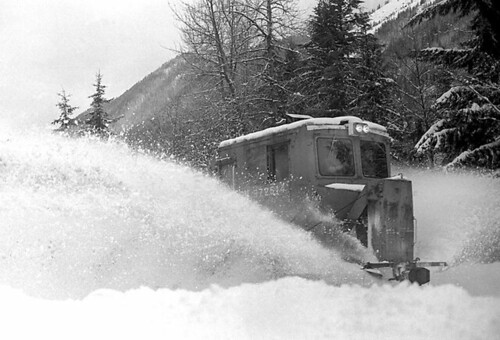

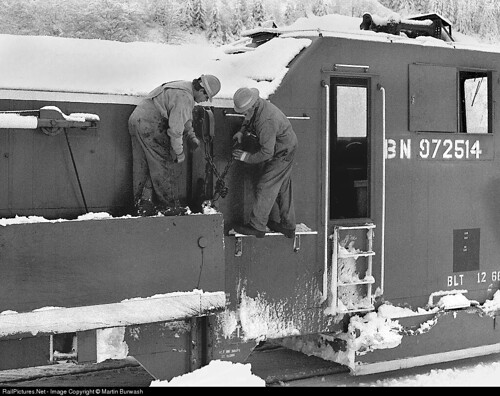
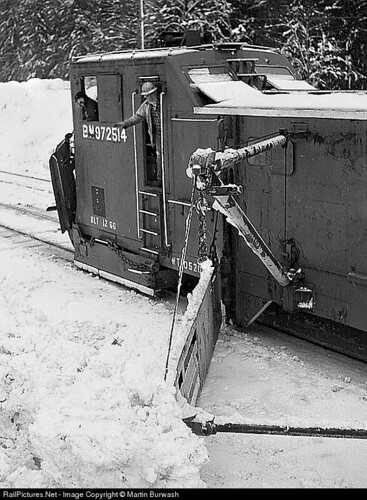
Martin Burwash Photos
Around the same time, I transitioned from HO scale to G gauge, and was introduced to the fun of operations. The weekly Friday night gang, religiously meet every Friday afternoon at a layout in the suburbs of Seattle. The gang meet and ran trains in sunshine, rain, sleet and even snow. The prospect of running a working snow plow came into my mind, and I began to dream of the day that I could build a working version of the Snow Dozer that I feel in love with. Fast forward, 10 years, and I began building my first outdoor garden railroad. That first winter, I equipped my GP9 with a hand built brass locomotive plow and plowed the few inches of snow that fell.
That next summer, I began thinking more seriously about building a Snow Dozer. I searched and searched the internet for information about GN Snow Dozers, each time coming up empty. Finally, I found a thread by a N scale modeler who built a non-working version. After a couple of email exchanges back and forth I was given copy of a hand drawing of BN snow dozer that the original author had used to build in N scale.
I quickly grabbed some styrene and started building what I thought would be the perfect working model of the Snow Dozer. By the time wintertime struck I had finished a rough model of a Snow Dozer; a bare frame stuffed with 2 large pieces of lead weight for traction, and a hastily built front brass plow. A few inches of snow fell that winter in the Seattle area, and I tested out the plow. It worked great!
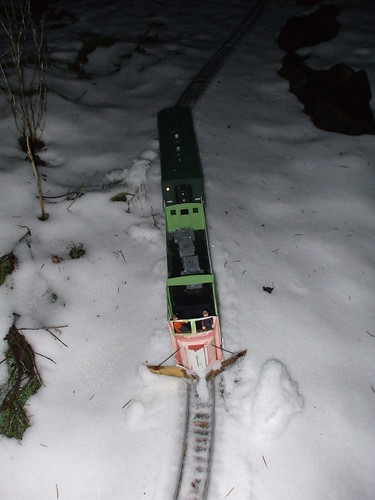


That first plow triggered a quest to find even more information about GN Snow Dozers, and to build a more accurate model. By this time, I was married and was attending graduate school, so not much actual modeling was happening, but I used any available time, and newly acquired research skills to scour the internet for even more information. I found a few scraps of information here and there, but nothing that was more accurate than the original HO scale drawing that I received. Around this same time frame, I began seriously considering making a trip to St. Paul, Minn. to visit the Minnesota Historical Society library to do some in-depth research on a Northern Pacific proposal and my M.A. thesis. As, the possibility of making a trip to the MNHS archives, I began to wonder if the GN archives held on the same site would have any drawings on GN Snow Dozers.
As luck would have it, I managed to carve out some archive time to search for GN Snow Dozer drawings. After searching through box after box, and not finding anything other than Authorizations For Expenditures (AFE), I finally found a box that had a complete list of each drawing number for the entire construction one version of the Snow Dozer. This four page document listed each and every drawing number I would need to correctly build a version of the Snow Dozer. Because time was running out in my archives search, I quickly requested another box that I thought would contain all of the drawings I needed.
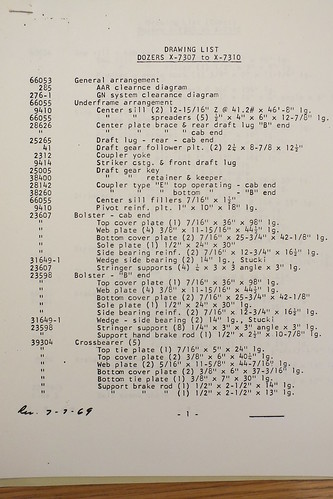
I opened this latest box, and before me were multiple original drawings (measuring 30” x 60” or more) that I would need to build a Snow Dozer. Quickly without much thought, I snaped a series of photos of each drawing. It wasn’t until I got back home at the end of the week, that I actually looked what I had found. In my haste, I missed quite a few other drawings that I now need, but these first few drawings started me on the project I’m currently on.
The drawings included; a full underframe, full body, general arrangement and a few detailed drawings of the front wing plow, along with some other assorted drawings. These drawing would prove to be a gold mine as eventually I would find out that they were of the exact prototype I was trying to model; BN 972514, or GN X7303, one of the last versions of the Snow Dozer to come out of the St. Cloud shops and stationed in the same territory that I was modeling.
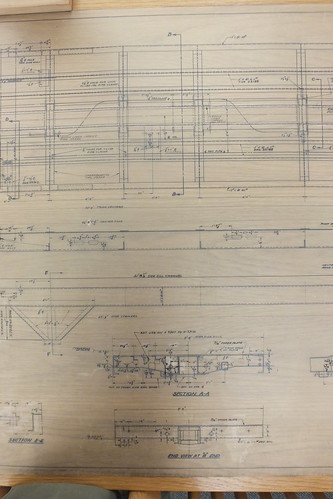

I hope this is enough to wet everyone's appetite for this build...
Craig